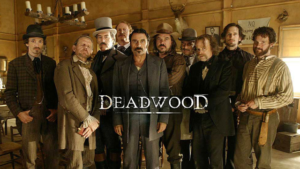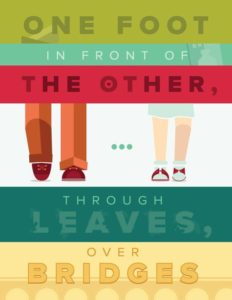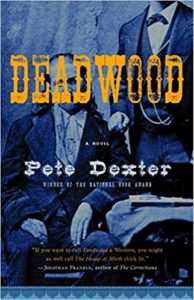 In my last post about baseball, I listed my favorite players by position. Today, I’m going to list the best players by uniform number from 0-60. This was something that Tim Kurkjian did, and since I’m missing watching baseball games, I thought I’d do the same. Kurkjian only went to #55. I’m going to #60 to prove something or other.
In my last post about baseball, I listed my favorite players by position. Today, I’m going to list the best players by uniform number from 0-60. This was something that Tim Kurkjian did, and since I’m missing watching baseball games, I thought I’d do the same. Kurkjian only went to #55. I’m going to #60 to prove something or other.
O – Al Oliver (OF, 1B) – Adam Ottavino is a distant, distant second.
1 – Ozzie Smith (SS) – Lou Whitaker (2B) is a close second. Pee Wee Reese (SS, 3B) and Richie Ashburn (OF) are a little further behind.
2 – Derek Jeter (SS) –Charlie Gehringer (2B) was close. Jimmie Foxx (1B, 3B, C) was better, but only wore #2 for one season)
3 – Babe Ruth (OF) This is a no-brainer. Alex Rodriguez (SS, 3B) and Jimmie Foxx (1B, 3B, C) were also in the running.
4 – Rogers Hornsby (2B) – Because numbers were originally issued based on where a player hit in the batting order, there are a lot of really great players who wore #3 and #4. While Hornsby is the best player to wear #4, Lou Gehrig (1B) and Met Ott (OF, 3B) are near the top of the list.
5 – Albert Pujols (OF, 1B) – Henry Aaron and Mel Ott (again) both wore #5 for one year each and are both slightly better players than Pujols, but Pujols is the best player to wear #5 for most (or all) of his career. Others that could have been in the conversation are George Brett (3B, 1B), Jeff Bagwell (1B), Joe DiMaggio (OF), Brooks Robinson (3B), and Johnny Bench (C, 3B). A lot of really great players wore #5.
6 – Stan Musial (OF, 1B) – Hornsby (2B, SS, 3B) and Mickey Mantle (OF, 1B) each wore #6 for one season but are associated with other numbers. Al Kaline (OF, 1B) is also in the discussion.
7 – Mickey Mantle (OF) – Barry Bonds (OF) wore #7 for one season.
8 – Joe Morgan (2B) – This one was tough. It came down to Morgan, Carl Yastrzemski (OF, 1B), and Cal Ripken Jr. (SS, 3B). Yogi Berra (C) was also a tremendous player who wore #8. I went with Morgan because he is generally considered the best second baseman ever.
9 – Ted Williams (OF) – Rogers Hornsby (2B, SS, 3B) and Joe DiMaggio (OF) both wore #9 for one season but are more associated with other numbers.
10 – Chipper Jones (3B) – An argument can be made for Lefty Grove (P), but I went with Jones.
11 – Barry Larkin (SS) – This one was tough. Hornsby (2B, SS, 3B) wore #11 for two seasons, and Eddie Mathews (3B, 1B) for one, but both are more associated with other numbers. An argument can be made for Paul Waner (OF), Edgar Martinez (3B, DH), and Carl Hubbell (P).
12 – Roberto Alomar (2B) – Several people wore #12 who were better than Alomar, but they only wore the number for a short time. Wade Boggs (3B) wore #12 for seven seasons but is normally associated with another number.
13 – Alex Rodriguez (SS, 3B) – No one else is really close.
14 – Pete Rose (Everywhere but P and C) – Willie Mays (OF) and Ricky Henderson (OF) both wore #14 for one year each but are more associated with other numbers.
15 – Carlos Beltran (OF) – There were four players better than Beltran who wore #15 for a short time, but all were more associated with other numbers.
16 – Ted Lyons (P) – Kurkjian went with Whitey Ford (P), but I thought Lyons and Hal Newhouser (P) were both more deserving.
17 – Keith Hernandez (1B) – An argument can be made for Todd Helton (1B) or Scott Rolen (3B), but I went with Hernandez. Kurkjian went with Dizzy Dean, but I don’t think he’s in the conversation.
18 – Bret Saberhagen – This was a tough one. A good argument can be made for Johnny Damon (OF). Kurkjian went with Damon. Joe Morgan (2B) wore #18 for seven years, the same number of years as Saberhagen, but Morgan is more associated with #8.
19 – Robin Yount (SS, OF) – Another tough one. Tony Gwynn (OF) is definitely in the conversation, but I felt Yount was the better player.
20 – Mike Schmidt (3B) – This is almost unfair. Frank Robinson (OF, 1B) also wore #20, and I’ve always thought that he was an underrated player. But even when I’m in a position to give him some love, I can’t because he’s up against the greatest third baseman in history. Life isn’t fair.
21 – Roger Clemens (P) – Warren Spahn (P) and Roberto Clemente (OF) are both in the conversation. In fact, Kurkjian went with Clemente. I don’t know if steroids played into Kurkjian’s decision, but Clemens is one of the greatest pitchers in history.
22 – Jim Palmer (P) – Kurkjian went with Clayton Kershaw, which is reasonable. Several other better players wore #22 for a few years, including Roger Clemens, who wore it for nine years. But these players are more associated with other numbers.
23 – Ryne Sandberg (2B) – He’s my favorite player. You didn’t think I’d pick someone else, did you? If I had, it could have been Zack Grienke (P) or Luis Tiant (P).
24 – Willie Mays (OF) – A lot of really great players wore #24, including Barry Bonds (OF), Rickey Henderson (OF), and Ken Griffey Jr. (OF). But Willie Mays was the best of them all.
25 – Barry Bonds (OF) – Jim Thome is a distant second.
26 – Wade Boggs (3B) – No one else is even close.
27 – Mike Trout (OF) – Scott Rolen (3B) is in the conversation, but Trout is the class of the field.
28 – Bert Blyleven (P) – No one else is close.
29 – Adrian Beltre (3B) – Rod Carew is the only one close. Kurkjian went with Carew. He was wrong.
30 – Nolan Ryan (P) – Tim Raines (OF) is a close second.
31 – Greg Maddux (P) — #31 is a special number to Cubs fans. Both Maddux and Fergie Jenkins (P) wore the number. They are also the two best players in MLB to wear #31.
32 – Steve Carlton (P) – Kurkjian went with Sandy Koulfax (P). That’s reasonable, but Koulfax’s career was so much shorter. Of course, that’s always the argument with Koulfax.
33 – Larry Walker (OF) – Kurkjian went with Eddie Murray (1B), which is reasonable.
34 – David Ortiz (OF, 1B, DH) – Nolan Ryan (P) could have been the choice here as well as for #30, but I’ll toss Ortiz a bone.
35 – Rickey Henderson (OF) – Phil Niekro (P) is a distant second.
36 – Gaylord Perry (P) – Robin Roberts (P) is the only other one in the conversation.
37 – Dave Steib (P) – Keith Hernandez could have been the choice here as well as #17.
38 – Curt Shilling (P) – No one else in the conversation.
39 – Dave Parker (OF) – The best players to wear this number only wore it for a short time. Parker wore it for 19 seasons. Roy Campenella (C) is also in the conversation.
40 – Frank Tanana (P) – Kurkjian went with Bartolo Colon (P).
41 – Tom Seaver (P) – This one was automatic. Eddie Mathews (3B) is a distant second.
42 – Jackie Robinson (2B, 1B) – Robinson might be the only player that could beat out Mariano Rivera (P) for this honor.
43 – Dennis Eckersley (P) – No one else is even close.
44 – Henry Aaron (OF) – Lots of great players wore #44, including Reggie Jackson and Willie McCovey. But no one is going to beat out Hammerin’ Hank.
45 – Bob Gibson (P) – This was a tough one. Pedro Martinez (P) is right there with Gibson, but only one can have this honor, and it goes to Gibson (Sorry, Pedro.).
46 – Andy Pettite (P) – I’m still scratching my head on this one. Kurkjian went with Lee Smith (P). I don’t think it’s even close.
47 – Tom Glavine (P) – Jack Morris (P) is in the conversation.
48 – Torii Hunter (OF) – I almost went with Rick Reuschel (P) who has a higher WAR in fewer seasons than Hunter. In fact, I think Reuschel’s career is badly underrated. But in the end, I went with Hunter.
49 – Charlie Hough (P) – Hough was one of the best knuckleballers ever. Kurkjian chose Hoyt Wilhelm (P), who he claims was the best knuckleballer ever. But Wilhelm only wore #49 for five seasons. Hough wore it for twenty-five. And if you want to throw a third knuckleballer into the mix, Tim Wakefield wore #49 for nineteen seasons.
50 – Mookie Betts (OF) – In just six seasons, Mookie Betts has a higher WAR than any player in history to wear #50, sans two players. One only wore the number for one year, and the other, Jamie Moyer (P), wore it for sixteen seasons. Kurkjian chose J.R. Richard, who was very good, but wouldn’t be in my top three.
51 – Randy Johnson (P) – I wanted to select Ichiro Suzuki (OF), but there was no way I could ignore Johnson. He was just too good.
52 – C.C. Sabathia (P) – No one else even close.
53 – Don Drysdale (P) – Bobby Abreu was in the conversation.
54 – Rich “Goose” Gossage (P) – No one else was close.
55 – Orel Hershiser (P) – Kevin Appier was close.
56 – Mark Buehrle (P) – No one else close.
57 – Johan Santana (P) – No one else close.
58 – Jonathan Papelbon (P) – Now I know why Kurkjian stopped at #55.
59 – Carlos Carrasco (P) – Ismael Valdez (P) is in the conversation.
60 – Dallas Keuchel (P) – No one else in the conversation.

 I went grocery shopping this morning. It’s not my favorite activity, especially now during a pandemic. For whatever reason, people often exhibit their worst behavior at the grocery store. I’m not sure why that is, but the grocery store seems to bring out their worst traits.
I went grocery shopping this morning. It’s not my favorite activity, especially now during a pandemic. For whatever reason, people often exhibit their worst behavior at the grocery store. I’m not sure why that is, but the grocery store seems to bring out their worst traits. I had an unusual experience last night. But first, some background.
I had an unusual experience last night. But first, some background. George Saunders is one of my favorite writers. His books include
George Saunders is one of my favorite writers. His books include  I miss baseball. Before our world was changed by the COVID-19 pandemic, I would routinely watch at least one baseball game each day. Sometimes more. Right now, we should be three weeks into the 2020 baseball season, and rather than writing this blog post, I should be watching a baseball game. Unfortunately, that’s not the world we’re living in right now.
I miss baseball. Before our world was changed by the COVID-19 pandemic, I would routinely watch at least one baseball game each day. Sometimes more. Right now, we should be three weeks into the 2020 baseball season, and rather than writing this blog post, I should be watching a baseball game. Unfortunately, that’s not the world we’re living in right now.
 There’s a guy I follow on Twitter by the name of
There’s a guy I follow on Twitter by the name of  In 1968, Kurt Vonnegut publish a short story collection entitled Welcome to The Monkey House. The most mainstream of the stories, “Long Walk to Forever,” wasn’t his favorite. In fact, he disliked the story and was afraid it would overshadow his other work in the collection.
In 1968, Kurt Vonnegut publish a short story collection entitled Welcome to The Monkey House. The most mainstream of the stories, “Long Walk to Forever,” wasn’t his favorite. In fact, he disliked the story and was afraid it would overshadow his other work in the collection. In an earlier post
In an earlier post My old website was really dated. It had gotten to the point where I couldn’t update the theme or some of the plug-ins anymore because the php code was too old (I’m not really sure what that means). I’ve been looking into new WordPress themes, or maybe even a new website builder, but I haven’t found anything I like yet.
My old website was really dated. It had gotten to the point where I couldn’t update the theme or some of the plug-ins anymore because the php code was too old (I’m not really sure what that means). I’ve been looking into new WordPress themes, or maybe even a new website builder, but I haven’t found anything I like yet.